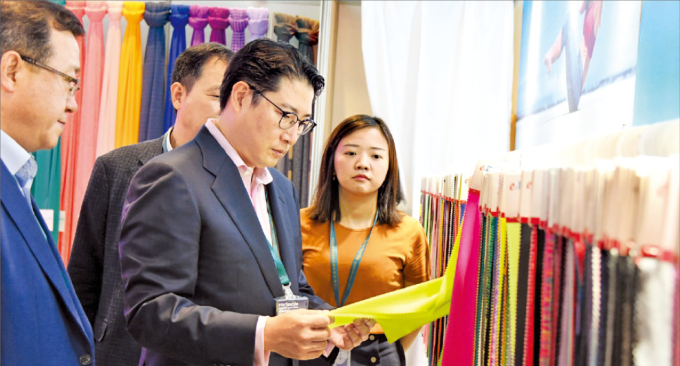Elastic textiles
Hyosung to expand spandex capacity on home clothing demand
By Dec 03, 2020 (Gmt+09:00)
2
Min read
Most Read
Samsung shifts to emergency mode with 6-day work week for executives


CJ CheilJedang to sell feed, livestock unit for $1.4 bn


Samsung Electronics' key M&A man returns; big deals in the offing


Affinity to buy SK Rent-a-Car at $572 mn, more deals expected


Keppel REIT to sell Seoul-based prime office T Tower



Hyosung TNC Corp, the worldŌĆÖs largest spandex manufacturer, will spend $36 million to nearly double its production capacity in Brazil to meet rising demand for the stretchable fiber used in casual clothing such as sportswear, as well as masks.
The capacity expansion plan, announced on Dec. 2, came just a month after the South Korean textile company said it would invest 60 billion won ($53 million) to ramp up spandex production in Turkey, in line with surging demand from Europe.
With spandex used for a wide range of garments such as yoga pants and skinny jeans, Hyosung TNC is considering further expanding its spandex facilities in other locations, said a Hyosung source.
ŌĆ£Our Brazil plant is running at full capacity but it canŌĆÖt meet all the demand. We have to transfer some of the products produced from other overseas plants, such as China, to Brazil,ŌĆØ said the Hyosung source.
ŌĆ£Given the tariffs of 18%, we concluded that producing within Brazil would be more cost effective than importing.ŌĆØ
Once the facility expansion is completed in Brazil by the end of next year, Hyosung will have an annual spandex production capacity of 22,000 tons, up from the current 12,000 tons at its plant in Santa Catarina, southern Brazil.
In comparison, its capacity in Turkey is set to increase to close to 40,000 tons per year from the current 25,000 tons.
Hyosung controls 33% of the worldŌĆÖs spandex market with its brand Creora. Its overseas plants are located in China, India and Vietnam, as well as in Brazil and Turkey.
Hyosung Chairman Cho Hyun-joon has stressed the importance of widening its lead over competitors in difficult times by making aggressive investments.
After being hit hard by a steep decline in clothing demand in the first half of this year due to the global pandemic, the textile company made a strong rebound in the third quarter thanks to the surging demand for comfortable clothing as people spend more time at home.
The company delivered an earnings surprise in the third quarter, swinging to an operating profit of 66.1 billion won in the July to September period from an 8.2 billion won loss three months before.
Its share price has leapt 76% since the start of the second half by Wednesday's close, outpacing a 27% rise in the broader Kospi index during the same period.
Write to Jae-kwang Ahn at ahnjk@hankyung.com
Yeonhee Kim edited this article.
More to Read
Comment 0
LOG IN







